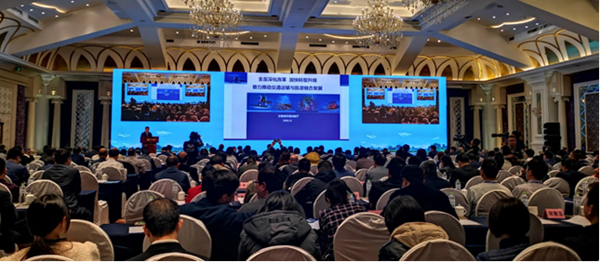Conference puts spotlight on integrated transport-tourism development

A conference briefing on China's integrated development of transport services and tourism is held in Guilin, South China's Guangxi Zhuang autonomous region on Nov 29 and 30. [Photo by Li Muhang/For en.gxzf.gov.cn]
A conference briefing on China's integrated development of transport services and tourism was held by the Ministry of Transport and the Ministry of Culture and Tourism in Guilin, South China's Guangxi Zhuang autonomous region on Nov 29 and 30.
As revealed in the conference, a comprehensive transport network covering major tourist destinations took shape in the country by the end of 2017. All scenic spots above a 4A status are accessible by tourist coaches, and key tourist attractions are accessible by buses.
In recent years, transport infrastructure across the country has been constantly improved to increase the accessibility of scenic areas. Ninety-seven percent of cities with a population of over 200,000 people now feature expressways. More than 2,500 kilometers of red tourism highways have been built since 2014.
Meanwhile, more than 60 percent of the 337 Chinese Excellent Tourism Cities are accessible by high-speed railway and 59.6 percent of them by civil flights. International cruise tourism also experienced blowout development, recording an annualized growth rate of 40 percent in passenger volume since 2016.
Next, the two ministries will ramp up their cooperation in information sharing and set up long-term coordination mechanisms. It is expected that all 3A-level tourist attractions nationwide will be accessible by coaches in 2020.
Guangxi, for its part, is a small-scale example of the national booming transport and tourism industry development. To date, the total mileage of highways in the region has reached 5,477 kilometers. All local scenic areas above 3A-level can be reached by coaches, buses and chartered buses.
In 2017, 523 million tourists spent 558 billion yuan ($82 billion) in Guangxi, representing year-on-year increases of 23.9 percent and 31 percent respectively.
